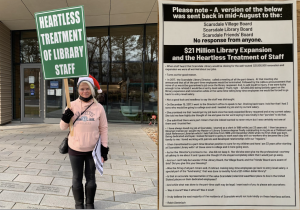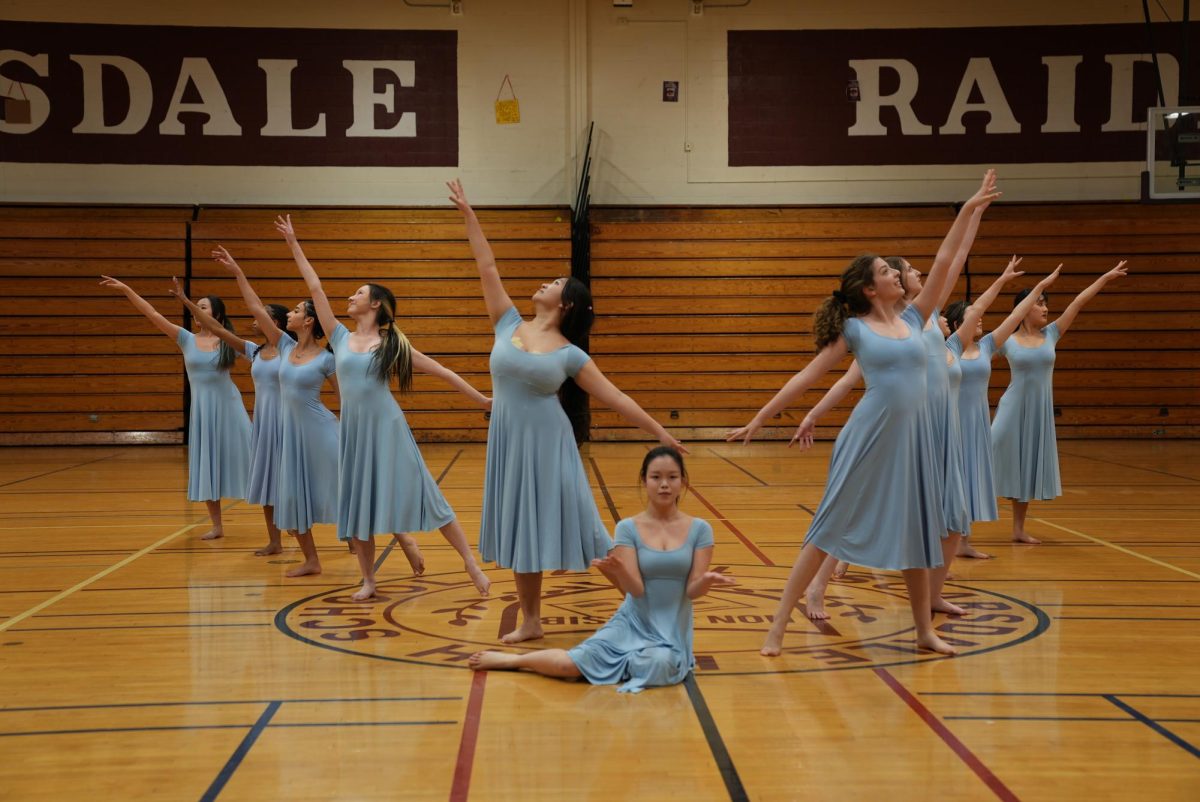How Does SHS Feel about the Updated March 8th Schedule?
On March 8th 2021, SHS plans to have students, on their respective cohort days, go back to full-day in person classes.
February 27, 2021
Almost one year after the nationwide switch to online learning, Scarsdale High School plans to have students return to full day in-person classes starting from March 8. Many people have mixed opinions about this change; they have concerns ranging from increased exposure to COVID-19 to the loss of synchronous zoom instruction. An email was sent to students and parents on Friday, February 26 confirming the plans for schedule change and answering frequently asked questions (FAQ).
The shift was designed to help bolster students’ education and mental health. There have been many worries over a decrease in material retention during the course of the hybrid schedule. Many have found that students pay less attention during classes that they are zooming into, as they can have their phones next to them, or that as students use internet resources to assist them on assignments and assessments, they are putting less effort into their learning. The shift to full day in-person classes may bring about a positive change away from this lackluster attitude towards school. “I think that I’ll definitely be able to focus more and I’ll be a lot more engaged. [Having full day in-person classes] takes away all the possible distractions […] So I can just be forced to be more engaged.” said Will Reed ‘22.
At the same time, the full-time presence in school raises questions about the efficacy of cross-cohorting. In the present schedule, classes are often split between the screen and the physical classroom in the morning, with afternoons serving as a way for the entire class to reconvene on zoom. After the change, classes will seldom have all students on zoom at the same time, and afternoon sessions will turn into cross-cohort streaming. “I one hundred percent learn better in person than I do on zoom, but keeping that in mind, I think I learn worse when cross cohorting compared to synchronous zoom, so it’s definitely a tradeoff,” said Simone Glajchen ‘23.
The schedule also puts virtual students at a disadvantage, since they would gain streaming time and lose valuable synchronous zoom sessions. Olivia Sun ‘23, a virtual student, expressed concern about the productiveness of streaming into class. “I feel like unless each classroom got a mic for the teacher to give to students while they were speaking and participating in class, then it’s really hard for students on zoom to hear their peers,” she said. “But otherwise, if it’s just half at school and half at zoom, then it’s hard to have a class discussion as a whole.” Without the proper equipment to keep online students engaged and focused, constant streaming can be detrimental to a virtual student’s learning experience.
The loss of synchronous zoom time also calls testing into question. Many teachers previously used synchronous zoom periods to conduct assessments, but if half the class is in person while the other half is online, it may jeopardize the fair testing process. “Right now everyone is on zoom at the same time, [I have] the entire class on zoom all at once, which…has been useful for when I want to give a test because…I know that everyone is taking it under reasonably similar circumstances. So that’s the big thing in my mind that we are going to lose,” said SHS math and computer science teacher Doug Vermes. As testing must continue, teachers will continue to employ the anti-cheating measures they currently do. But beyond that, the majority of testing protocols lies in the trust between students and teachers.
Mental health in particular has become an increasingly relevant issue among teens, and the pandemic has only exacerbated these trends. After schools were closed and events were canceled, many were left with monotonous days that stretched on without physical human interaction. Reed ‘22 reflected, “I think that spending more time in in-person will be incredibly beneficial for the whole school’s mental health because it adds a routine to the day […and] a lot of the day is just kind of a wash. [Also] human interaction is a huge component for me, to be in a room with other people, we didn’t realize how much we needed it, but we need it terribly.” A combination of increased screen time and isolation due to the pandemic has drained students mentally and a fully in-person experience may be what students need to start bringing back a sense of normalcy.
The benefits to a student’s mental health, however, may not be mirrored by the effects on a student’s physical health. At the end of the day, the safety of students is paramount during a pandemic. The new schedule requires students to eat lunch during school hours, and although precautions have been taken for indoor seating, lunch opens up a new level of risk in school. To make lunchtime safer, many have expressed that they are open to the idea of eating outside or having their lunch while socially distanced. SHS social studies teacher Heather Waters, expressed her trust in the administrators’ decision. “I want to believe that nobody would make a decision that would put kids at risk, and I truly believe that. I get to work closely with the administration, and I completely trust that they would not put me or the kids in danger, nor would the Board,” said Waters.
Throughout the last year, many policies and moves to bring students back to school have been built upon mutual trust and respect among students, teachers, and the administration. Despite what changes the March 8th schedule change may bring, good or bad, it can only be effective if the community works together to maintain productive and safe learning environments.
Be sure to check out our last article about the new schedule for more information.

























